Search Results for 'British army'
113 results found.
British Army and RIC unleash terror on the streets of Clifden
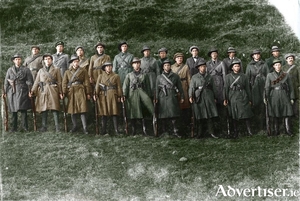
March 1921 saw the British army's D Company Auxiliaries continue their tour of east Galway, assisted by an RAF spotter plane, the RIC, the Black and Tans, and various members of the Crown Forces.
Irish was never more important
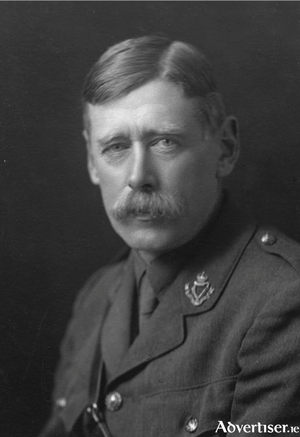
In September 1907 Stephen L Gwynn MP set out for a prolonged cycle-walkabout through Connemara. He was a very well known man in the Galway area, which he had represented for more than 12 years at Westminster as a member of the Irish Parliamentary Party. He was, as well, a literary man and a poet, who took genuine pleasure talking with, and meeting people. With fishing rods and knapsack, he set out on his bicycle on what turned out to be an eventful journey, along Cois Fhairrige to Clifden, through the mountains to Killary and Leenane, across Joyce Country to Lough na Fooey, then on to Ballinrobe and Tourmakeady, and home again along the coast road.*
The art of the letter head
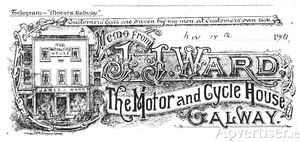
Our illustration today is of the letterhead of JJ Ward who owned The Motor and Cycle House on Eyre Square. This building is shown on the left of our illustration. It was originally occupied by Gilbeys and was next door to what is the Imperial Hotel today. James Ward set up in business here in 1903 and invited the public to ‘inspect the largest stock, the best chosen variety and the best value in Connaught in Cycles and Accessories’. In 1909 he wrote: “In my repair shop, I have the same group of hands working who have worked under me for 6 years – they know their work and do it well. I’ll give you a cycle for £7 7s as good as you can get elsewhere for a much higher price. In fact it is worth £9 9s.”
The British raid on Inis Mór, December 1920
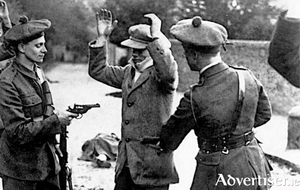
November 1920 was a bloody month in Galway with the killing of Eileen Quinn, Fr Michael Griffin, Michael Moran, and Harry and Patrick Loughnane. D Company Auxiliaries had made their presence felt.
Patrick Joyce
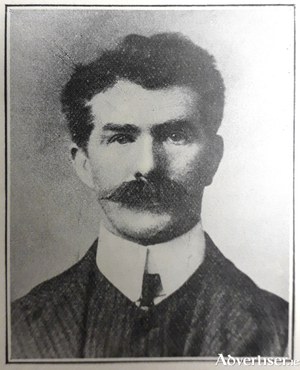
Patrick Joyce was born at Lisheenagaoithe, near Headford, on May 23, 1868. He became a monitor teacher in 1884, taught in Cloghanover School for two years, later as principal of Trabane, and then Tiernee in the parish of Carraroe. In 1892 he married Margaret Donohue. He was eventually appointed as principal of Barna National School and his wife taught in Boleybeg National School.
Stone mad
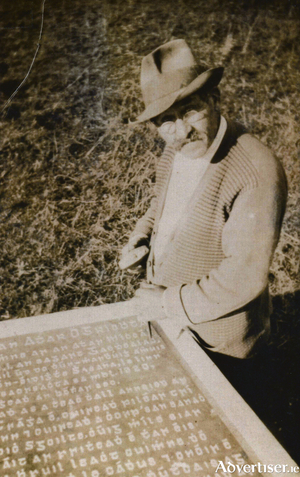
Like most towns, Galway was built using native stone and there was plenty of that around. There were black limestone quarries in Menlo and Angliham, and a limestone quarry at Merlin Park worked by the Blake family until about 1850 and later by Sibthorpes of Dublin. In about 1880, a Scotsman named Millar rented a number of quarries in the Galway area, two at Shantalla, one at Ballagh near Bushy Park, and one at St Helen’s, Taylor's Hill, where they quarried fine-grained red granite. There was a marble and granite works at Earl’s Island where one of the employees was a stonemason named Pat Fahy.
Some nasty close shaves in Galway
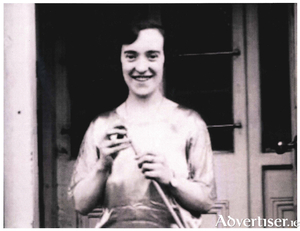
Baker’s Hotel and Billiard Rooms on Eyre Street was run by Captain Baker who had served with the British army during the war. It was much frequented by the Black and Tans, some of whom (including Edward Crumm) stayed there. Baker’s daughter Eileen, who had recently saved a little boy named Hennessy from drowning in the canal, gave evidence at the military enquiry into the death of Constable Crumm. The local volunteers suspected her of being too friendly with the Tans, and because of that she had a startling experience on the morning of September 18, 1920.
NUI Galway research leads to return of World War I hero’s medal
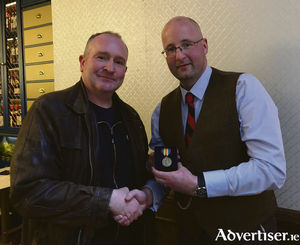
Research conducted by NUI Galway academic Dr John Murray has led to the recovery of a medal, thought long-lost, belonging to a Great War veteran from Dublin who was decorated for bravery.
‘It’s a big, noisy, intergenerational book’

SINÉAD HYNES is a closed book emotionally. She is not inclined to share what goes on inside her with her husband Alex, and only with difficulty with herself. For her, it is easier to lie in hospital, claiming she has respiratory illness, than to tell him the truth.
Commemorating the Connaught Rangers mutiny - a century on
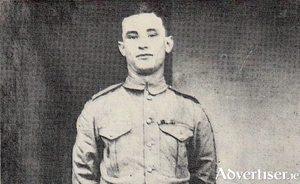
ON SUNDAY June 27 1920, a small group of Connaught Rangers, from C Company of the 1st Battalion, based at Wellington Barracks, Jalandhar, the Punjab, announced they were refusing to obey orders.

